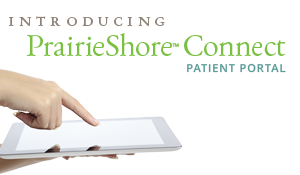Back Pain
What is back pain?
Most people will have a minor back problem at one time or another during their lives. Our body movements usually do not cause problems, but it’s not uncommon for symptoms to develop from everyday wear and tear, overuse, or injury. Back problems and injuries often occur during sports or recreational activities, work-related tasks, or home projects.
Back pain can occur anywhere from the neck down to the tailbone (coccyx). The back includes:
- The bones and joints of the spine (vertebraecamera.gif).
- The discs that separate the vertebrae and absorb shock as you move.
- The muscles and ligaments that hold the spine together.
Common causes and symptoms of back pain
Mechanical spine conditions account for up to 98% of cases of back pain. These include back strain, disc herniation, disc disease, osteoarthritis and spinal stenosis. They are caused by an injury to one or more of the structures of the back.
Back injuries frequently occur when you use your back muscles to perform activities that you do not do very often, such as lifting a heavy object or doing yard work. Minor injuries also may occur from tripping, falling a short distance, or excessive twisting of the spine. Severe back injuries may result from car accidents, falls from significant heights, direct blows to the back or the top of the head, a high-energy fall onto the buttocks, or a penetrating injury such as a stab wound.
Pain from an acute injury may be sudden and severe, and bruising and swelling may develop soon after the injury. Pain from an acute injury usually does not last longer than 6 weeks. Acute injuries include:
- An injury to the ligaments or muscles in the back, such as a sprain or a strain.
- A fracture or dislocation of the spine. This can cause a spinal cord injury that may lead to permanent paralysis. It is important to immobilize and transport the injured person correctly to reduce the risk of permanent paralysis.
- A torn or ruptured disc. If the tear is large enough, the jellylike material inside the disc may leak out (herniate) and press against a nerve.
- An injury that causes the compression of nerves in the lower back (cauda equina syndrome).
You may not be able to pinpoint a specific injury, especially if your symptoms began gradually or during everyday activities. These injuries occur most often from improper movement or posture while lifting, standing, walking, sitting, or even while sleeping. Symptoms can include pain, muscle spasms, and stiffness. The pain often goes away within 4 weeks without any treatment.
Other causes of back pain
Although back pain is often caused by an injury, there can be other underlying causes. Some people are simply more likely to develop back pain than others. Getting older, having a family history of back pain, sitting for long periods, lifting or pulling heavy objects, and having a degenerative disease such as osteoporosis can all make you more susceptible to back injuries and pain.
Other causes of back pain not be related to an injury include:
- Conditions that weaken the spine, such as ankylosing spondylitis, osteoarthritis, osteoporosis, spinal stenosis, or Paget’s disease, can cause back pain. These conditions are most common in older adults. In rare cases, tumors or infections can develop in or around the spine.
- Some medical conditions can cause pain to spread to the back from other parts of the body (referred pain). Many health problems that can cause back pain have nothing to do with the bones, joints, muscles, or ligaments of the back.
- Spinal deformities such as scoliosis, kyphosis, and spondylolisthesis can cause back pain.
- Chronic pain syndrome caused by a previous injury or degenerative disease with aging can cause back pain.
Home treatment
Most back pain will get better and go away by itself in 1 to 4 weeks. Home treatment will often help relieve back pain that is caused by minor injuries. It is usually a good idea to continue your regular activities while your back is healing. Alternating hot and cold packs, gentle stretching, massage, and over-the-counter remedies can be helpful. Avoid heavy lifting and activities that seem to make your back problems worse.
Medical treatment
Discussing your medical history and a physical examination are the first steps in the evaluation and management of back pain. Based on this information and specific guidelines, x-rays may be ordered. However, not every patient with back pain requires x-rays.
The majority of patients will improve with controlled physical activity, physical therapy, nonsteroidal anti-inflammatory drugs, and, in appropriate patients, muscle relaxants. Surgical intervention is reserved for the patient who has not shown improvement on conservative therapy and has undeniable symptoms of a mechanical disorder that surgery can correct. If back pain persists despite these measures, you may be referred to a specialist.
At PrairieShore™ Pain Center, our goal is to relieve your pain and improve your quality of life. If your primary physician has advised you to see a specialist for your pain, turn to us for help. To schedule your appointment, please contact us here or give us a call at (847) 883-0077.







